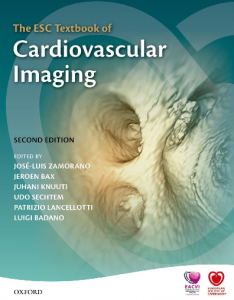We report highlights of pulmonary hypertension presentations from the most recently held European Respiratory Society (ERS) congress, held in Amsterdam, the Netherlands, from 26th–30th September 2015, and also from the American Heart Association (AHA) Scientific Sessions, held in Orlando, USA, from 7th–11th November 2015.
News from ERS
High levels of anxiety and depression in PH
Psychological morbidity remains under-diagnosed in pulmonary hypertension (PH), and one third of patients suffer from depression and/or anxiety for which only 38% are being treated, according to a study conducted by Dr Gina Somaini and colleagues (University Hospital of Zurich, Switzerland). They investigated the prevalence and course of anxiety and depression and their association with health-related quality of life (HRQoL) disease markers and survival over a mean period of 16 months.
In the study, 45 newly diagnosed and 86 pretreated patients with arterial and chronic thromboembolic PH had repeated assessments of the Hospital Anxiety and Depression Scale (HADS), HRQoL, six-minute walking distance (6MWD) and New York Heart Association functional class.
According to HADS, 33% of PH patients suffered from depression and 34% had anxiety. Of these patients, 38% were in treatment for their depression or anxiety. Scores improved within six months after the introduction of PH-targeted treatment and survival was worse in patients with anxiety (p=0.014) (abstract PA2112*).
New QoL score tested
Dr Beatriz Garcia-Aranda and workers (Royal Brompton Hospital, London) described a new, easy-to-use quality of life (QoL) questionnaire, emPHasis-10, based on 10 key questions designed for use in PH patients. They reported experience in using this score and its relation to markers of disease severity in 174 patients. The emPHasis-10 score was found to be significantly associated with established predictors of exercise intolerance and prognosis. However, further studies are needed to provide cut-offs, which can be used to introduce or escalate disease-specific therapies in PH (abstract PA3776*).
Benefits with initial combination therapy?
There is little data on the use of initial dual oral combination therapy for pulmonary arterial hypertension (PAH) in current practice. Dr Caroline Sattler (Hôpital Bicêtre, Université Paris-Sud, France) obtained clinical and haemodynamic data from 52 newly diagnosed PAH patients from the prospective French PAH registry, who were on initial combination treatment (endothelin receptor antagonist and PDE-5 inhibitor) at baseline and at first evaluation (3−6 months). Initial dual oral combination therapy in patients with PAH reduced pulmonary vascular resistance (PVR) by 40% at 3−6 months, and was associated with an 82% survival rate at three years. Dr Sattler and her co-workers conclude that an initial combination therapy strategy is appealing but it needs to be properly compared to sequential combination therapy (abstract PA3775*).
Feasibility of exercise training in PAH
In PAH, strong evidence supports prescribed exercise to safely improve QoL, haemodynamics and exercise capacity. Currently no dedicated PAH rehabilitation programme exists in the UK. Drs Alison Mackenzie and Martin Johnson (Golden Jubilee National Hospital, Glasgow) sought to determine the acceptability of rehabilitation with the aim of developing a PAH specific exercise programme. Patients attending the Scottish Pulmonary Vascular Unit were invited to participate in a survey. A PAH rehabilitation programme was described. Patients were asked if they would be interested in all components, specific components or none. Responses were received from 43% (97/224), of whom 62.8% (61/97) were interested in all components, and 73.2% (71/97) in outpatient rehabilitation. Those interested were younger and trended towards worse QoL scores and were more likely to have idiopathic PAH.
Results showed that exercise training in PAH is acceptable. Based on free comments from patients, barriers may be employment, a dependant family member, or other limiting comorbidities. The authors conclude that they have demonstrated sufficient enthusiasm to pursue this as a promising treatment option in the UK (abstract PA3779*).
Adherence to medication should be better
Little is known about the level of adherence to PH specialist medicines and the factors that may determine it. Duncan Grady and colleagues (Pharmacy Department, Papworth Hospital, Cambridge) investigated this in a study of 262 PH patients (56.9% on monotherapy), who were treated with targeted therapy (sildenafil, tadalafil, bosentan, ambrisentan, iloprost, epoprostenol, treprostinil). The patients completed a Morisky Medication Adherence Scale-8 (MMAS-8) questionnaire (see http://dmorisky.bol.ucla.edu/MMAS_scale.html), either in hospital or at home via postal mail.
Participants were also invited to fill in self-reported pill count questions three months apart. The answers were used to calculate each participant’s medicine consumption across this period. Data from MMAS-8 showed that:
- 7% reported high adherence
- 5% moderate adherence
- 8% low adherence.
The authors conclude that overall adherence seems to be slightly higher than published adherence rates to medicines for other disease groups but over half of the PH patients report suboptimal adherence behaviour. Further work to develop interventions to improve adherence appears to be warranted (abstract PA3786*).
*Abstracts for all ERS sessions can be accessed at: http://myeposter.ersnet.org/my-abstract-book-2015/
News from AHA
AHA produces paediatric PH guidelines
For the first time, guidelines have been developed for children with PH. These were widely discussed at the AHA meeting in Orlando, USA. The joint American Heart Association/American Thoracic Society guidelines are published in Circulation (doi: 10.1161/CIR.0000000000000329).
“These children suffer with health issues throughout their lives or die prematurely – particularly if they’re not properly diagnosed and managed. But with the proper diagnosis and treatment at a specialised centre for pulmonary hypertension, the prognosis for many of these children is excellent,” said Dr Stephen L Archer (Queens University, Kingston, Ontario, Canada) and co-chair of the guideline’s writing committee.
The new guidelines provide practical advice on:
- classification of PH
- proven and emerging medical and surgical therapies
- treatments which are approved for children with PH and the dosages that should be used.
The guidelines also point to gaps in knowledge about paediatric PH and offer advice about issues that parents and healthcare providers struggle with, including whether children should have anticoagulants, how to determine whether a child with PH can safely engage in exercise or travel on a plane, and how high altitude can cause or worsen PH.
The guidelines are available at http://circ.ahajournals.org/content/early/2015/10/29/CIR.0000000000000329.full.pdf+html
Calcification − a new threat in PAH
Canadian workers have, for the first time, demonstrated the presence of significant distal pulmonary artery (PA) calcification, which contributes to disease worsening in PH patients.
Dr Sophie Chabot (CRIUCPQ-University Laval, Quebec, Canada) and her team, using computed tomography (CT) scans, in a study of 50 PAH patients, showed that they had a significant increase in distal PA calcification compared to control patients matched for age, sex and comorbidities known to promote vascular calcification. This non-invasive finding was histologically confirmed in the same patients post lung transplantation. The fact that PAH patients are now living longer increases their odds of developing PA calcification lesions.
This process appears to be related to the upregulation of Runt-related transcription factor 2 (RUNX2), a key osteogenic factor which triggers the development of proliferative and calcified vascular lesions within the lungs, thus worsening PAH. Thus RUNX2 looks to be an attractive new therapeutic strategy to improve PAH according to the authors (Circulation 2015;132:A14631).
Women under-represented in clinical trials
To assess the safety and efficacy of cardiovascular disease (CVD) drugs, including those prescribed for PH, in the diverse population of patients who will use them post-approval, the US Food and Drug Administration (FDA) has implemented guidance and regulation to encourage the inclusion of women and racial/ethnic minorities in drug clinical trials.
A study presented by Dr Emmanuel O Fadiran and colleagues from the FDA Centre for Drug Evaluation and Research (CDER) assessed the participation of women and minorities in clinical trials for CVD indications for New Drug Applications (NDAs) approved at FDA CDER from 2013−2014.
Four novel CVD drugs were approved in this time frame, including two drugs indicated for pulmonary hypertension (PH) (riociguat, total CT population n=2691; macitentan, n=1,884), and one drug each for prevention of thrombotic acute CV events (vorapaxar, n=41,972) and treatment of neurogenic orthostatic hypotension (NOH) (droxidopa, n=1,125).
Results showed that the majority of the trial participants were White (85%), with a mean age of PH patients of 48 years. The proportion of female participation varied substantially by disease indication, with PH (a female-predominant disease) having the highest female participation.
The proportion of female participation was 26% for thrombotic CV events, 40% for NOH, and 47% for PH. Female participation in pivotal trials only (in which benefit-risk was demonstrated) was 24% for thrombotic CV events, 33% for NOH, and 75% for PH.
Female participation in the prevention of thrombotic CV events was lower than anticipated based upon disease prevalence in the population. Further exploration of demographic subgroup participation in clinical trials for CVD drugs in a larger sample size is ongoing (Circulation 2015;132:A11144).
The full abstracts can be accessed in Circulation 2015;132:suppl 3 (November 10th 2015 issue).









